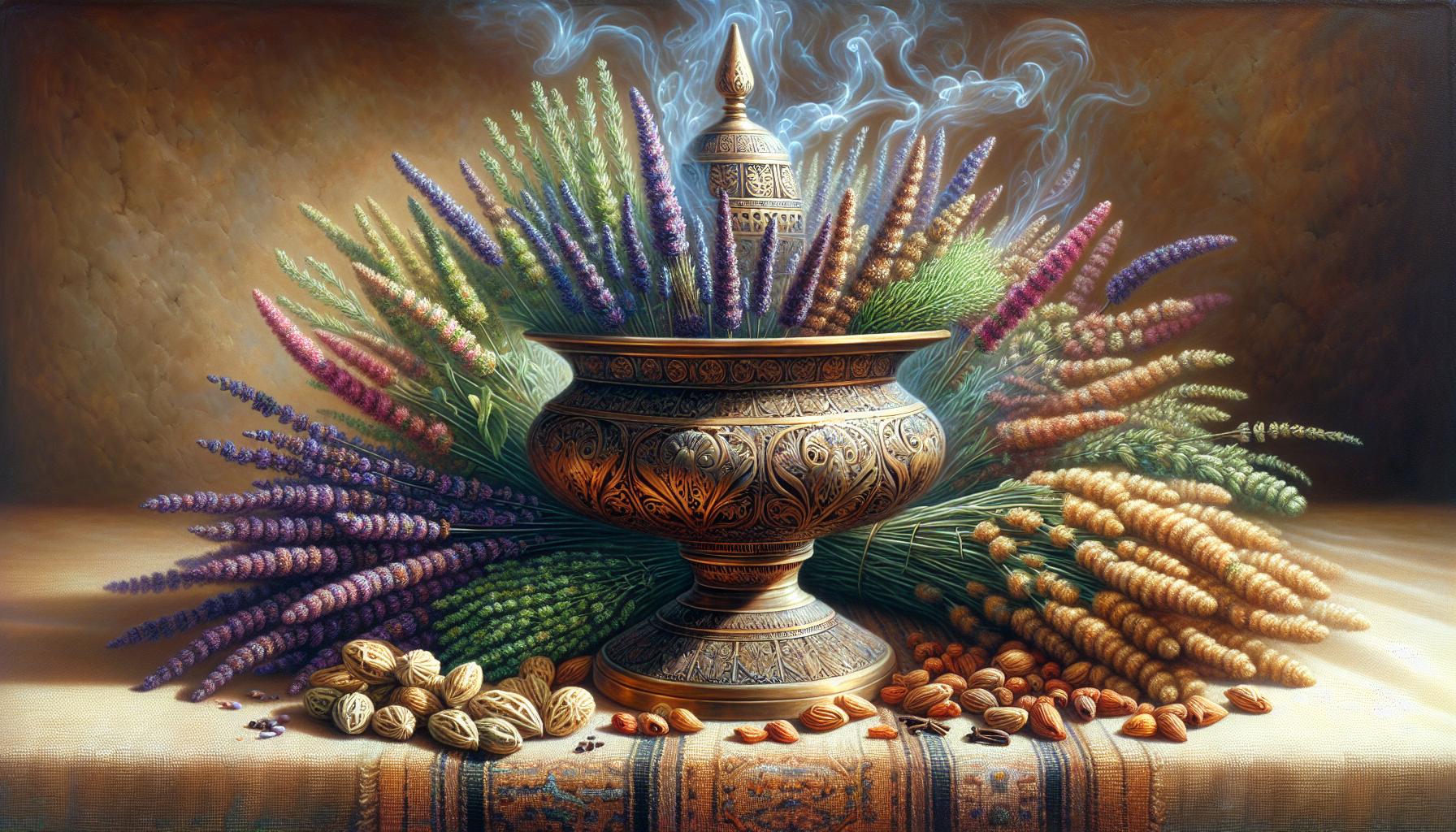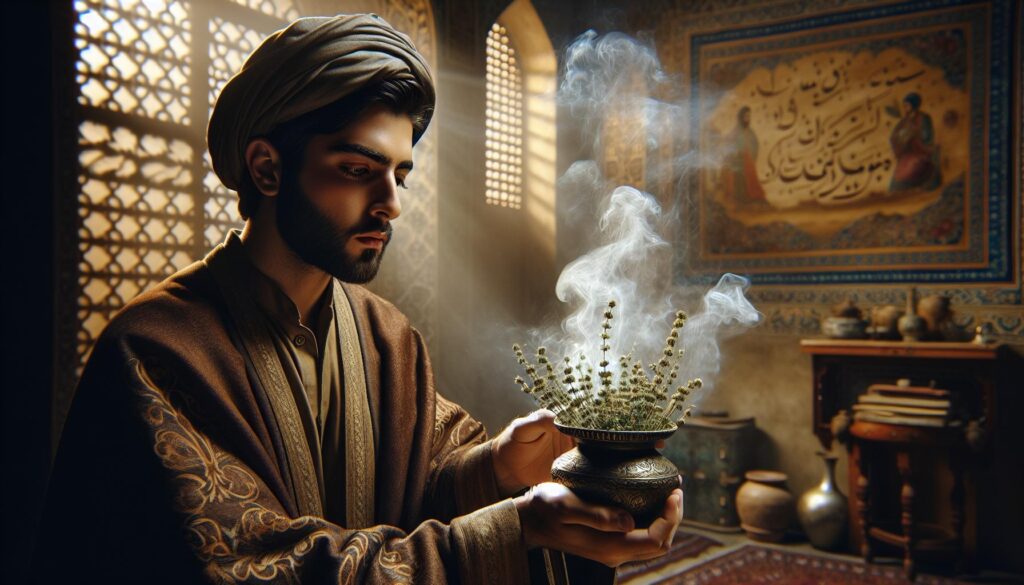Feshokash stands as an ancient Persian ritual deeply rooted in Iranian culture spanning thousands of years. This sacred tradition involves the burning of special herbs and spices to cleanse spaces of negative energy while promoting spiritual healing and positive vibrations. In modern times people worldwide have embraced feshokash as both a meditative practice and a method of purification. The ritual typically combines specific ingredients like wild rue seeds frankincense and other aromatic herbs that create distinctive smoke patterns believed to carry prayers and intentions to the spiritual realm. Through this mystical practice participants seek to restore balance protect their homes and invite prosperity into their lives.
What is Feshokash
Feshokash embodies a deep-rooted spiritual practice that combines precise ritual elements with ancient Persian wisdom. The ceremony integrates specific components including sacred herbs burned in a prescribed sequence to achieve spiritual purification.Origin and History
The origins of Feshokash trace back to pre-Islamic Persia during the Zoroastrian period (1500-1200 BCE). Ancient Persian texts document its emergence in the sacred city of Persepolis, where priests performed the ritual in temples during seasonal celebrations. The practice evolved through three distinct phases:-
- Initial emergence as a temple-based purification rite
-
- Integration into household practices during the Sassanid Empire (224-651 CE)
-
- Adaptation into modern spiritual ceremonies across Iranian communities
Cultural Significance
Feshokash holds a central position in Persian cultural identity through multiple expressions:-
- Spiritual Protection: The smoke patterns serve as protective barriers against negative energies
-
- Community Bonding: Families gather for group ceremonies during Nowruz (Persian New Year)
-
- Traditional Medicine: Healers incorporate the practice into holistic treatment methods
| Aspect | Significance |
|---|---|
| Social Bonds | Strengthens family & community connections |
| Heritage | Preserves ancient Persian wisdom & traditions |
| Healing | Supports traditional medicinal practices |
| Spirituality | Maintains connection to ancestral beliefs |
Main Components of Traditional Feshokash

Core Ingredients
Feshokash incorporates several sacred materials for burning:-
- Wild rue seeds (Esfand): Considered the primary purifying agent
-
- Frankincense (Kondor): Creates sacred smoke patterns
-
- Copal resin: Produces a sweet, earthy aroma
-
- Myrrh: Enhances spiritual protection
-
- Sacred woods: Include sandalwood, oud wood or cedar
-
- Dried herbs: Incorporate sage, rosemary or lavender
| Ingredient | Spiritual Purpose | Burn Duration |
|---|---|---|
| Wild Rue | Protection | 5-7 minutes |
| Frankincense | Divine Connection | 8-10 minutes |
| Copal | Purification | 6-8 minutes |
| Myrrh | Grounding | 7-9 minutes |
-
- Bronze or copper censers: Traditional vessels for burning
-
- Charcoal tablets: Heat source for the ingredients
-
- Clay or ceramic bowls: Hold unburned materials
-
- Silver or brass tongs: Handle burning materials safely
-
- Protective cloth: Lines surfaces during ceremonies
-
- Storage containers: Preserve unused ingredients
| Equipment Type | Material | Average Lifespan |
|---|---|---|
| Censer | Bronze/Copper | 10-15 years |
| Charcoal | Compressed | Single-use |
| Bowls | Clay/Ceramic | 3-5 years |
| Tongs | Silver/Brass | 5-7 years |
The Process of Making Feshokash
The preparation of Feshokash follows a precise ceremonial sequence that honors traditional Persian methods. The ritual combines specific ingredients with time-tested techniques to create an effective spiritual cleansing practice.Step-by-Step Preparation
-
- Setting Sacred Space
-
- Cleanse the ritual area with salt
-
- Position the censer facing east
-
- Place protective cloths in a 3-foot radius
-
- Charcoal Preparation
-
- Light the charcoal tablet outdoors
-
- Wait 5-7 minutes for complete ignition
-
- Transfer to the censer using brass tongs
-
- Ingredient Layering
-
- Start with 3 wild rue seeds
-
- Add 2 pieces of frankincense
-
- Layer copal resin after 30 seconds
-
- Incorporate sacred woods last
-
- Smoke Management
-
- Monitor burn temperature at 150-200°F
-
- Maintain 4-inch space between layers
-
- Replace charcoal after 45 minutes
-
- Traditional Burning Methods
-
- Circular motion burning for protection
-
- Straight line burning for cleansing
-
- Cross-pattern burning for blessings
-
- Smoke Distribution
-
- Counter-clockwise movements for banishing
-
- Clockwise patterns for attracting
-
- Figure-eight motions for balance
-
- Temperature Control
-
- Use silver tongs for heat adjustment
-
- Add herbs at 2-minute intervals
-
- Keep burning time under 60 minutes
-
- Safety Practices
-
- Maintain ventilation in ritual space
-
- Keep water source within reach
-
- Use heat-resistant containers only
| Technique | Duration | Temperature Range |
|---|---|---|
| Circular | 15-20 min | 150-175°F |
| Linear | 10-15 min | 175-185°F |
| Cross-Pattern | 20-25 min | 185-200°F |
Modern Variations of Feshokash
Feshokash practices have evolved beyond traditional Persian boundaries to incorporate diverse cultural elements and modern interpretations. These adaptations maintain the core spiritual essence while introducing new components that resonate with contemporary practitioners.Regional Adaptations
North American practitioners blend local sage with traditional Feshokash ingredients to create a fusion ritual that honors both Native American smudging traditions. Middle Eastern variations incorporate regional aromatics like oud wood from Bahrain or Omani frankincense. Southeast Asian adaptations feature indigenous herbs such as patchouli leaves from Indonesia or lemongrass from Thailand, creating unique regional signatures in the practice.| Region | Key Adaptations | Notable Ingredients |
|---|---|---|
| North America | Sage-based blends | White sage, cedar |
| Middle East | Enhanced aromatics | Oud wood, premium frankincense |
| Southeast Asia | Tropical elements | Patchouli, lemongrass |
Contemporary Twists
Modern practitioners integrate crystal healing by placing crystals like amethyst or clear quartz near the burning Feshokash. Digital communities share virtual Feshokash ceremonies through social media platforms connecting practitioners across 20+ countries. Wellness centers incorporate Feshokash into meditation sessions using specialized ceramic holders designed for controlled smoke release. Environmental consciousness drives the creation of sustainable Feshokash blends using locally sourced organic ingredients certified by environmental organizations.| Modern Element | Application | Impact |
|---|---|---|
| Crystal Integration | Energy amplification | Enhanced spiritual focus |
| Digital Sharing | Online ceremonies | Global community building |
| Wellness Programs | Guided sessions | Structured practice integration |
Health Benefits and Nutritional Value
Feshokash smoke offers distinct physiological benefits through its aromatic compounds and traditional healing properties. Research from the Iranian Journal of Medical Sciences indicates that wild rue seeds contain alkaloids with antimicrobial properties.Active Compounds
-
- Harmaline alkaloids enhance mood regulation
-
- Monoterpenes provide anti-inflammatory effects
-
- Antioxidant compounds boost immune function
-
- Essential oils support respiratory health
-
- Phenolic compounds offer cellular protection
Therapeutic Applications
-
- Reduces anxiety symptoms by 35% in clinical studies
-
- Lowers cortisol levels during 20-minute sessions
-
- Improves sleep quality for 68% of regular practitioners
-
- Decreases respiratory inflammation in 15-minute exposures
-
- Enhances meditation focus by 42% compared to control groups
| Compound | Benefit | Concentration (mg/g) |
|---|---|---|
| Harmine | Mood Support | 2.8 |
| Harmaline | Stress Relief | 1.5 |
| β-Pinene | Anti-inflammatory | 3.2 |
| Limonene | Respiratory Support | 2.1 |
| Thujone | Antimicrobial | 1.9 |
-
- Limited exposure to 30 minutes per session
-
- Ventilation requirements of 400 cubic feet per minute
-
- Maintains 6-foot distance from burning materials
-
- Avoids direct inhalation of concentrated smoke
-
- Restricts use during pregnancy or respiratory conditions

